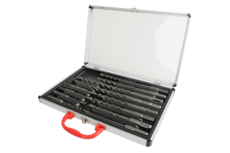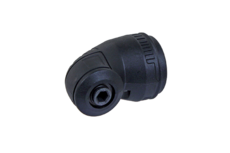Drilling
Whether stone, concrete, tiles or wood - every building material requires a different drill. Good to know that there is the right drilling attachment for every type of material.
Drilling attachment for concrete and stone:
If a concrete or stone drill is used, it is important to carefully check the condition of the object to be drilled. Therefore the first layer of the wall should be drilled. If red dust (brick wall) or white dust (limestone wall) comes to light a stone drill is needed. If grey dust falls out of the hole a concrete drill is the best choice.
Drilling attachment for wood:
Wood can be drilled easier compared to other, harder materials, but some things should be considered to get the results you want. When working on wood, only wood drills with a center point should be used. For small holes a twist drill can be used. For deep holes from 8-10 mm, an auger drill and for the production of blind holes and the precise drilling of knot holes, a forstner drill is recommendable. Another tip is: tightening. Wood should always be tightened for machining as well as drilling in the direction of the grain should also be considered.
Drill attachment for tiles:
When drilling in tiles special skill is required because tiles can easily splinter. For the choice of the drill, the scratch hardness of the tile is decisive. A tile and glass drill should be used for tiles up to scratch hardness 3.
Important: Before drilling, be sure to turn off the hammering function, otherwise the tile would most likely be damaged.
Drill attachment for metal:
For drilling in metal, it is recommended to use an HSS drill (HSS = High Speed Steel). These have a peak angle of 118 degrees whereas harder metals e.g. stainless steel needs an angle of 135 degrees. Since metal, unlike wood forgive no oblique holes, it is advisable to use a stand drilling machine instead of a conventional drill. With this device it is easy to drill holes exactly at a 90 degree angle. In addition, one should know that holes in metal should be drilled with significantly less revolutions per minute, than holes in wood.
Important safety information for all types of drilling:
Do not forget protective glasses! Especially when drilling in metal or concrete, it is important to protect your eyes from flying splinters.
 Very good (4.7 / 5.00)
Very good (4.7 / 5.00)














